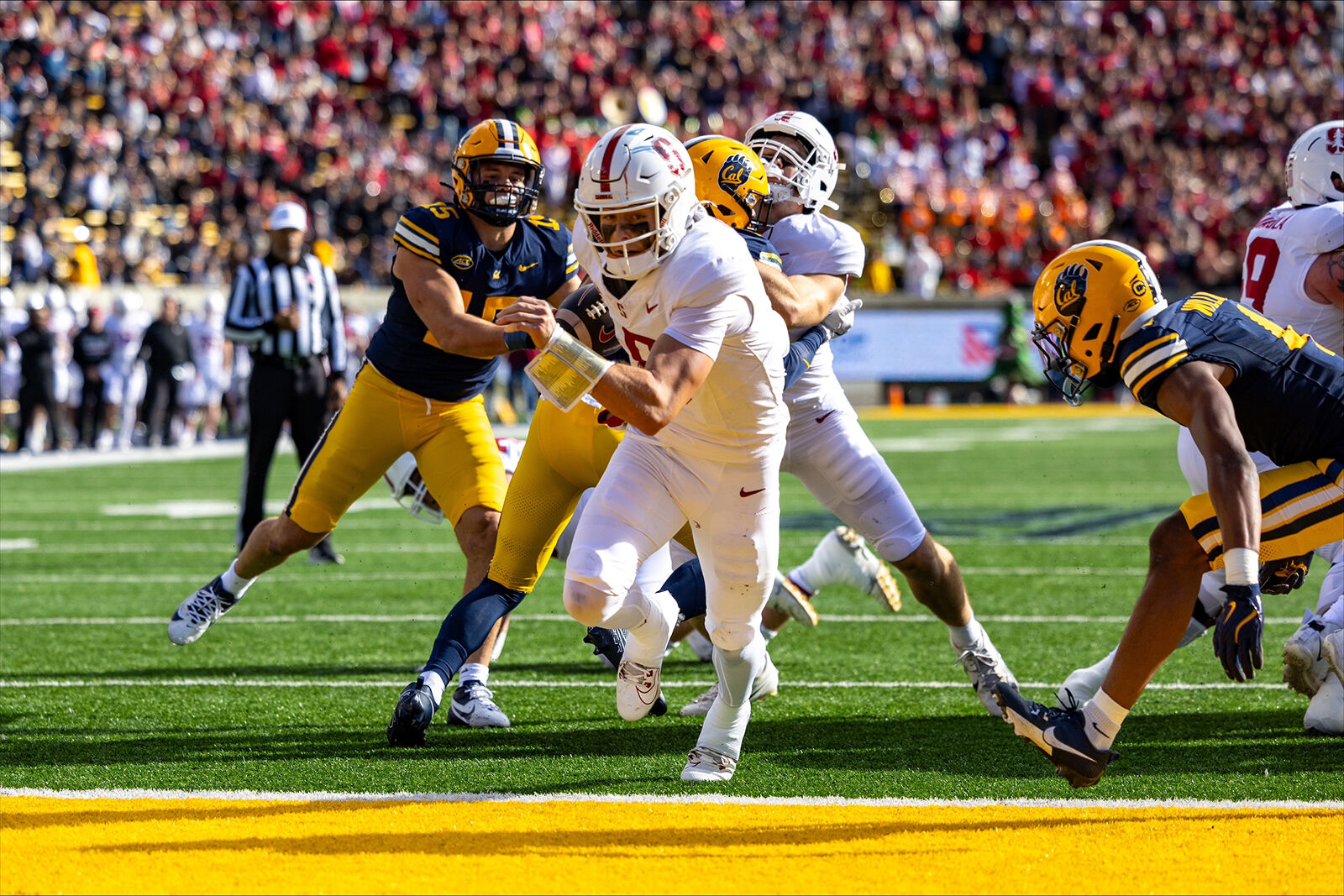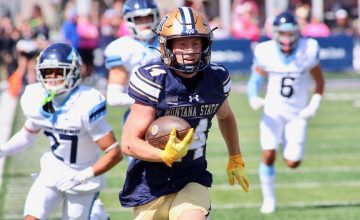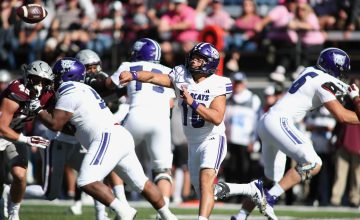There’s an art to being a transfer within the world of college sports. There’s an unwritten process to follow. Just one wrong step or a poorly timed word and you’re apt to alienate yourself to your teammates and coaches, consequently ruining a chance to achieve your goals.
The quarterback position, with its leadership and communication demands, is the most tedious of all to step into. Especially when you’re replacing a legend.
Montana State’s new man under (or behind) center is Justin Lamson, who gained experience in transferring as he went from Syracuse to Stanford to Bowling Green before landing at MSU. He was aware of that before he first set foot on campus to take a shot at being the next signal-caller for the Bobcats.
Just the sight of so many moves in short time frame can make some skeptical.

“You don’t want to be the guy that jumps right in the first workout; just saying stuff and being vocal,” Lamson, who was announced as the Bobcats’ starting quarterback on Monday, said that morning. “Because (the Bobcats) made the national championship without me last year, so they got all the talent in the world in this locker room before I was here. It’s one of those things where you gotta come in and put your head down and work and gain the respect of others.
“What I’ve seen is transfers come in and they think they’re better than the program. That’s when bad things start to happen and (teammates) lose respect.”
Lamson has also had good experience in learning the difference between individual success and team success.
“I was telling some of the guys in a team meeting that, ‘I haven’t won that much and that team success is much bigger than individual success,’” saidLamson, who saw the Cardinal go 6-18 in his two seasons there. “I’m just happy to be part of a program that’s used to winning. There are guys that want to win and are willing to do the stuff necessary to win.”
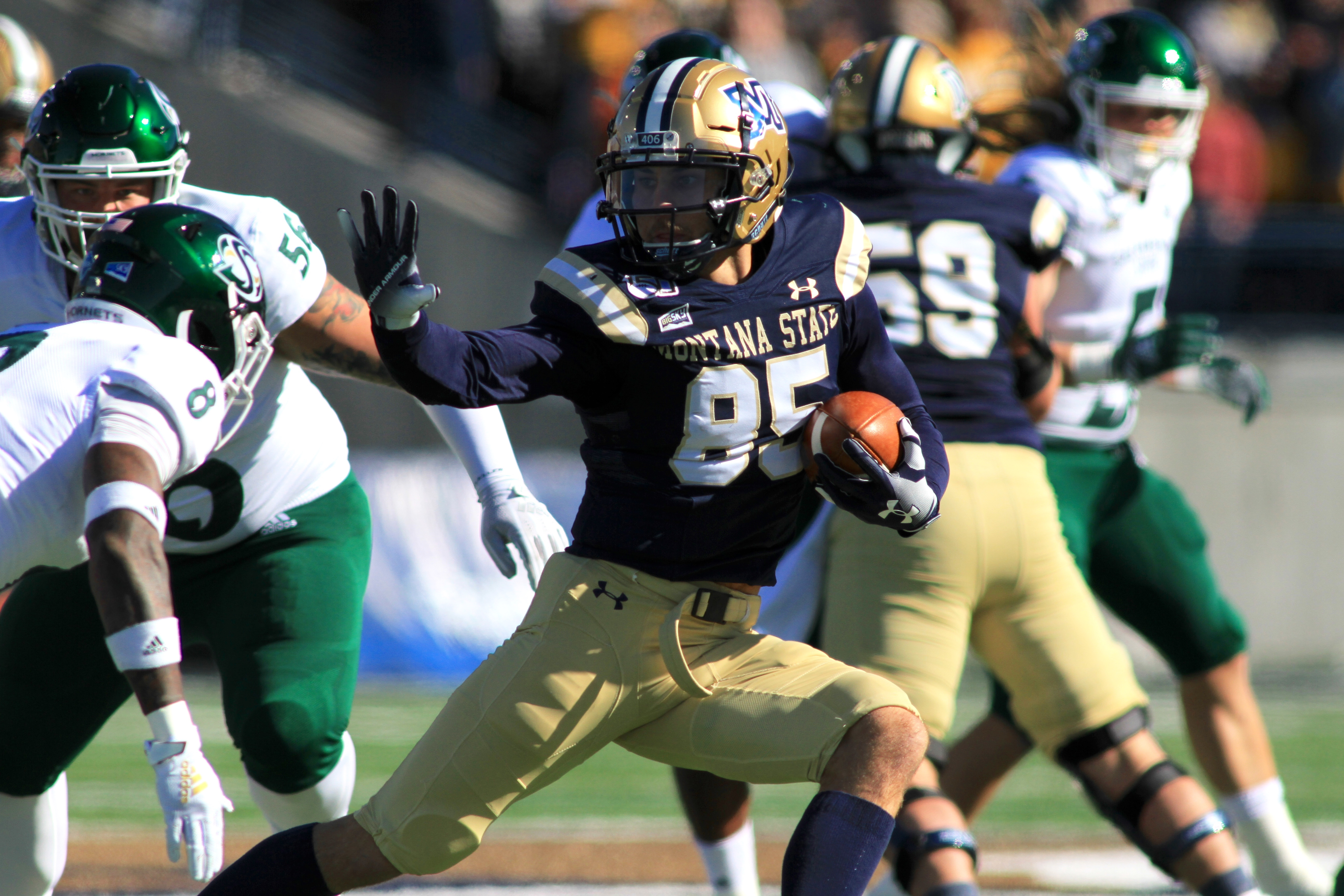
Lamson came out of Oak Ridge High School in El Dorado Hills, California in 2021 as one of the top recruited quarterbacks in the state. He completed 207 of 312 passes (66.3%) for 3,114 yards with 24 touchdowns and eight interceptions in 13 games finishing with a 10-3 record. Oak Ridge is the same high school that produced Kevin Kassis, a four-year starter at wide receiver for Montana State.
Lamson had offers from six FBS schools, including Louisville, Boise State, Syracuse and Wyoming, where MSU head coach Brent Vigen was the offensive coordinator. Lamson chose Syracuse and after a redshirt season he emerged as the backup quarterback in the spring only to suffer a season-ending injury.
Lamson transferred to Stanford and got the starting job just five games into the 2023 season, facing none other than the Oregon Ducks, who Montana State will face this Saturday.
In that game two years ago, Lamson ran 22 times, often out of desperation, as the Ducks cruised to a 42-6 win. Of the 22 carries, five were sacks and only a handful were designed running plays. Lamson led the Cardinal on two scoring drives to start the game. Both drives ended with field goals and Stanford led 6-0.
A week later, he began to gain a reputation for making big plays as he ran for a key touchdown to cut a 29-0 deficit to 29-26 when the Cardinal recovered to beat Colorado in overtime in one of the most memorable games of the 2023 college football season. The Cardinal pulled off an upset last season against No. 22 Louisville when Lamson threw a game-tying touchdown on fourth-and-1 in the fourth quarter.
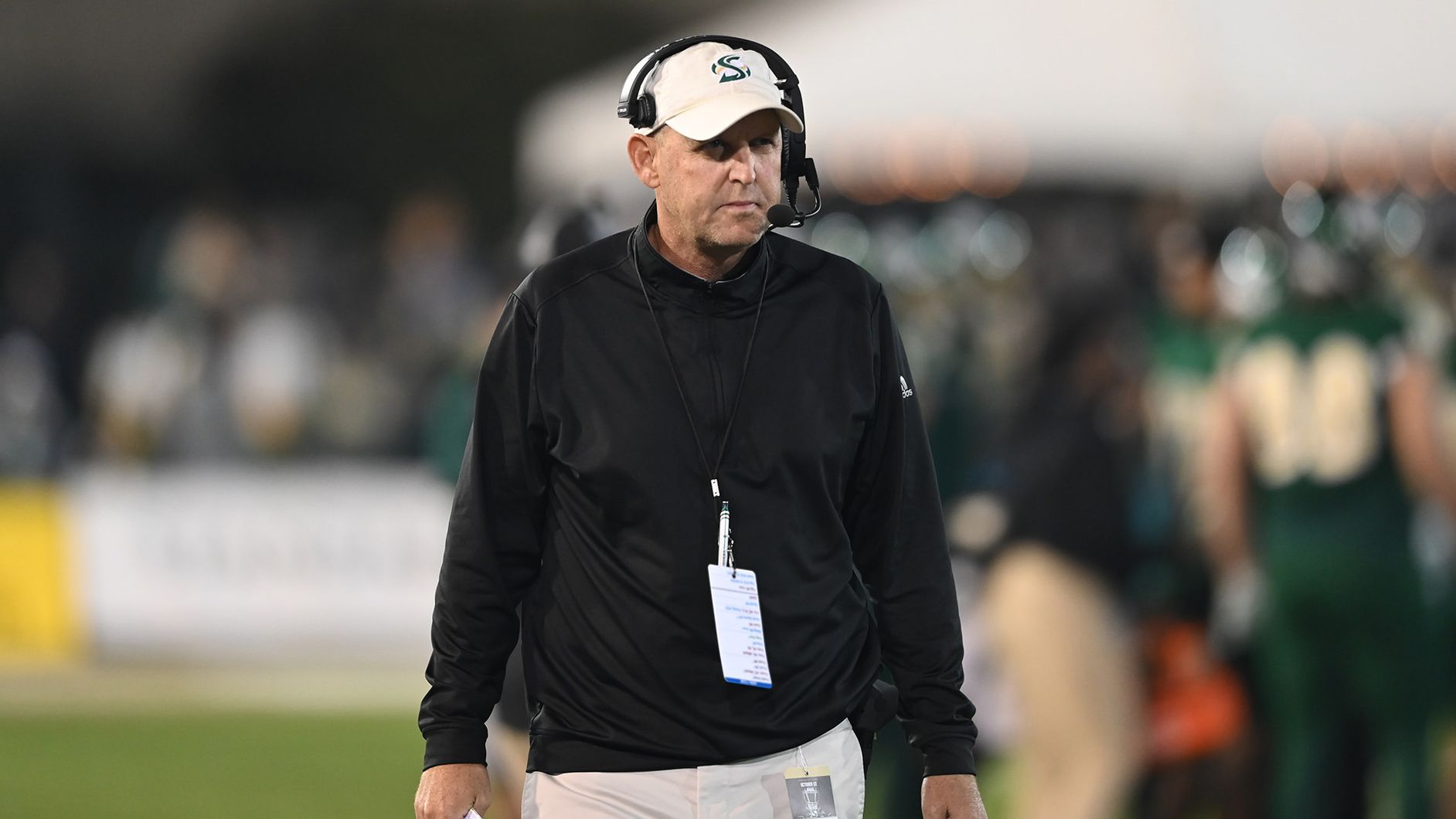
Despite the heroics, Stanford finished 3-9 for two straight seasons, with eight losses by 30 points or more. At that point, Lamson saw head coach Troy Taylor depart and he opted to transfer to Bowling Green in January. But that amounted to a cup of coffee as head coach Scott Loeffler left in February and Lamson got back in the portal. He then connected with Vigen and signed at MSU in March.
Lamson was a little late to participate in spring ball, so he spent his time getting to know his teammates and the community. Vigen knew of Lamson and felt he’d be a good fit at MSU.
“You hope a guy can just come in and be himself, just do that,” Vigen said. “I felt good about it. I didn’t feel like he was going to assume anything. I felt he was the type of guy who, out of high school or transfer, he would fit in here. Then it becomes ‘new guy here, how’s it gonna work?’ Right from the start it was apparent to his teammates that this guy is going to work hard. Not only is he going to work hard in the weight room and everything, but he’s going to work at the relationship piece to it.
“He’s going to communicate; he’s not going to be stand-offish. He’s going to get to know guys whether that’s in this building or elsewhere. I don’t think it was anything super complicated for Justin. That happened pretty quickly. It wasn’t a four-month deal. It was in the first couple weeks, and he felt like ‘I belong here.’”
Despite the late start, Lamson came on strong during fall camp. His 16 for 18 showing in the lone scrimmage of the preseason was probably the icing on the cake. He finished with 145 yards and two touchdowns against no interceptions.
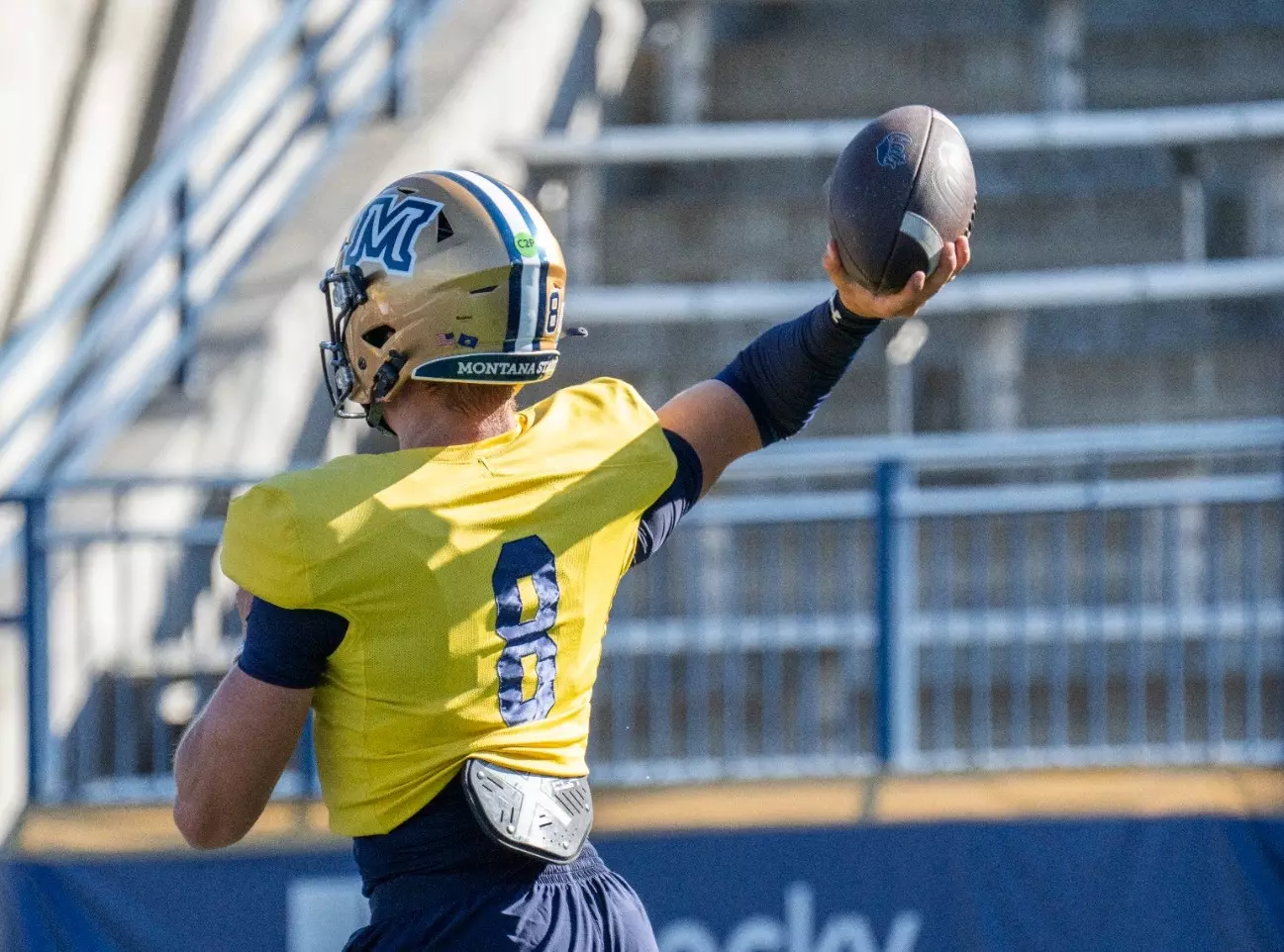
The Big Sky Conference is no stranger to Lamson. His older brother, Colton, played for UC Davis, where he was voted the most improved offensive player in 2021. Taylor was the head coach at Sacramento State, where he won three BSC titles, before taking the Stanford job. He was also recruited by several BSC schools, including Montana State.
Lamson put up huge passing numbers in high school. However, his playing time was cut into by the pandemic as he essentially went from his junior season straight into college. He didn’t get any game time at Syracuse and most of his playing time came off the bench at Stanford, where he was 62 for 135 for 804 yards with four touchdowns and four interceptions overall. Most of his success came on the ground as he was called on to get tough yards on short yardage plays. He was able to run for 13 touchdowns in his two seasons at Stanford.

Despite trailing in most games last season and being forced to throw the ball, Stanford still only managed 191 yards passing per game and the Cardinal quarterbacks were sacked 39 times in 12 games as they were flushed out of the pocket on a consistent basis. Lamson should find the going a little smoother at MSU where the Bobcats have had a strong offensive line and their run game has taken the pressure off the quarterbacks for most of the past decade.
By comparison, the Bobcats allowed just 11 sacks in 16 games in 2024 due in part to Tommy Mellott’s mobility. Despite throwing the ball about 10 less times per game than Stanford, MSU averaged 184 yards – just seven less than Stanford – through the air. Another advantage for Lamson is that the Bobcats have had the ability to set up their passing game with a ground attack that has led the Big Sky, statistically, for five straight seasons.
Most problematic for Lamson and the Bobcats at this point will be going up against one of the best teams in the nation.
Lamson will get a second shot in three years against FBS No. 7 Oregon, this time with No. 2 FBS Montana State when the Bobcats invade Autzen Stadium in Eugene this Saturday. The two teams were the last in their respective divisions to lose a game in 2024 as the Ducks fell in the FBS quarterfinals and the Bobcats lost in the FCS title game.
The two teams have only played once. In the opener of the 1947 season, Norm Van Brocklin quarterbacked the Ducks to a 27-14 comeback win after MSU held a 14-6 lead in the 4th quarter in front of a sellout crowd of 11,500 at Hayward Field to spark a 7-3 campaign.


